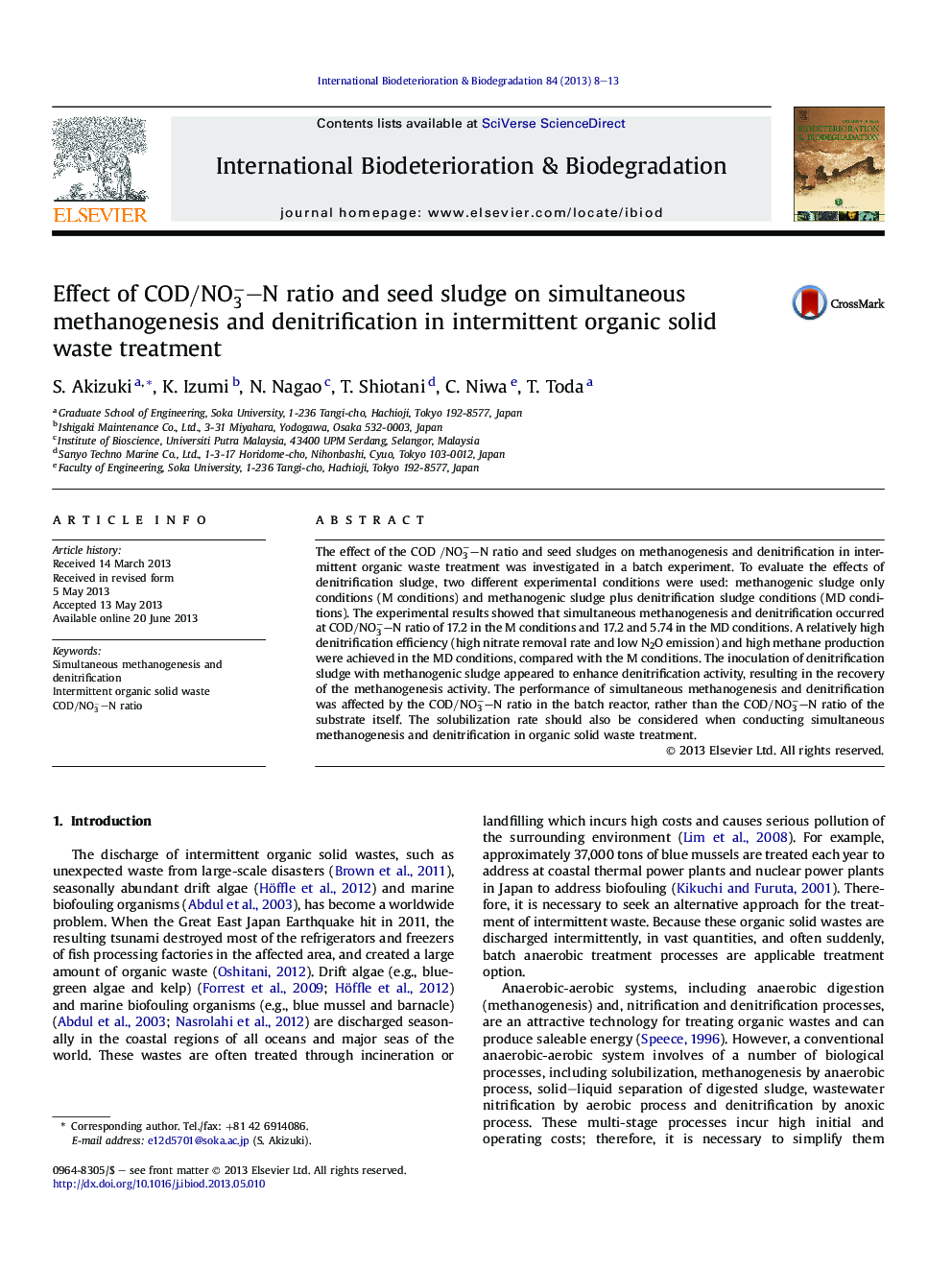| Article ID | Journal | Published Year | Pages | File Type |
|---|---|---|---|---|
| 6289419 | International Biodeterioration & Biodegradation | 2013 | 6 Pages |
â¢Simultaneous methanogenesis and denitrification was investigated in batch experiments.â¢Intermittent organic solid waste such as blue mussels was used as a substrate.â¢Addition of denitrification sludge enhanced denitrification and methanogenesis.â¢Process was affected by SCOD/N ratio, rather than COD/N ratio of substrate itself.
The effect of the COD/NO3â-N ratio and seed sludges on methanogenesis and denitrification in intermittent organic waste treatment was investigated in a batch experiment. To evaluate the effects of denitrification sludge, two different experimental conditions were used: methanogenic sludge only conditions (M conditions) and methanogenic sludge plus denitrification sludge conditions (MD conditions). The experimental results showed that simultaneous methanogenesis and denitrification occurred at COD/NO3â-N ratio of 17.2 in the M conditions and 17.2 and 5.74 in the MD conditions. A relatively high denitrification efficiency (high nitrate removal rate and low N2O emission) and high methane production were achieved in the MD conditions, compared with the M conditions. The inoculation of denitrification sludge with methanogenic sludge appeared to enhance denitrification activity, resulting in the recovery of the methanogenesis activity. The performance of simultaneous methanogenesis and denitrification was affected by the COD/NO3â-N ratio in the batch reactor, rather than the COD/NO3â-N ratio of the substrate itself. The solubilization rate should also be considered when conducting simultaneous methanogenesis and denitrification in organic solid waste treatment.
